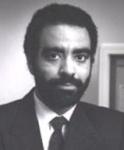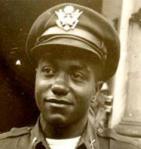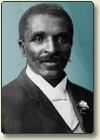In honor of Black History Month, here are few profiles of contributors to history of African descent:
Marc Hannah
 Anyone awed by the special effects in the films Jurassic Park, Terminator 2 and The Abyss should thank Hannah. The computer scientist is one of the founders, in 1982, of the software firm Silicon Graphics (now SGI), where the special-effects genius developed 3-D graphics technology that would be used in many Hollywood movies. Donkey Kong fans also owe a debt of gratitude to Hannah: He was instrumental in designing the Nintendo 64 gaming system.
Anyone awed by the special effects in the films Jurassic Park, Terminator 2 and The Abyss should thank Hannah. The computer scientist is one of the founders, in 1982, of the software firm Silicon Graphics (now SGI), where the special-effects genius developed 3-D graphics technology that would be used in many Hollywood movies. Donkey Kong fans also owe a debt of gratitude to Hannah: He was instrumental in designing the Nintendo 64 gaming system.

Kenneth J. Dunkley
3-D Viewing Glasses and Holography
Kenneth J. Dunkley is currently the president of the Holospace Laboratories Inc. in Camp Hill, Pennsylvania. He is best known for inventing Three Dimensional Viewing Glasses (3-DVG) – his patented invention that displays 3-D effects from regular 2-D photos without any type of lenses, mirrors or optical elements. By studying human vision, Dunkley discovered that blocking two points in a person’s peripheral vision will cause an ordinary picture to appear 3-Dimensional, so he developed his 3-DVG to block out these points.
In addition to his 3-DVG invention, Kenneth Dunkley also receives attention for his efforts as a visual pioneer. In Harrisburg, PA, at the Museum of Scientific Discovery, he has conducted visual effects workshops for four years. Dunkley is also a leader in the field of holography.
Thanks to Tanisha and Bryan Jones and their daughter Sinai for compiling these profiles from the following sources:
1) The Encyclopedia of African-American Heritage, by Susan Altman
2) The Roots website, theroots.com
3) Famous Black Inventors website, black-inventor.com






 Generally, when people think of famous African-American inventors, one of the first names that springs to mind is George Washington Carver. Perhaps most famously, Carver’s inventions included the discovery of over 300 different uses for peanuts – such as making cooking oil, axle grease and printer’s ink. But despite his penchant for inventing, Carver was never interested in money or prestige so much as helping his fellow man.
Generally, when people think of famous African-American inventors, one of the first names that springs to mind is George Washington Carver. Perhaps most famously, Carver’s inventions included the discovery of over 300 different uses for peanuts – such as making cooking oil, axle grease and printer’s ink. But despite his penchant for inventing, Carver was never interested in money or prestige so much as helping his fellow man.